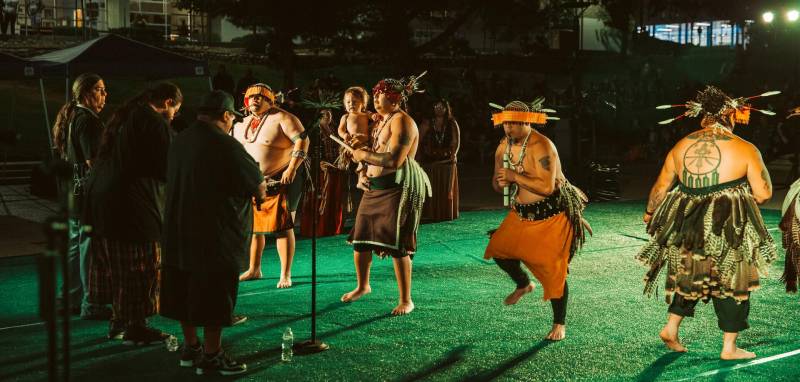

Native American Day, celebrated annually on the fourth Friday of September in some states, honors the rich history, cultures, and contributions of Native American peoples in the United States. While Native American Day is not yet a federal holiday, its observance has grown in significance as the country increasingly recognizes the vital role Native American communities have played in shaping the nation. This article explores the origins of Native American Day, its journey toward wider recognition, and some interesting facts about the holiday and its cultural importance.
The idea of a day dedicated to honoring Native American history and culture dates back to the early 20th century. Native American advocates and their allies worked tirelessly to promote awareness and respect for Native cultures at a time when many Native communities faced marginalization and discrimination. Dr. Arthur C. Parker, a Seneca Indian and director of the Museum of Arts and Science in Rochester, New York, was one of the earliest advocates for a national "American Indian Day." In 1916, New York became the first state to officially recognize American Indian Day, marking an important step toward wider recognition of Native American heritage.
The push for Native American rights gained momentum in the 1960s, during the broader Civil Rights Movement. Native activists sought to raise awareness about the injustices faced by Indigenous peoples, including the loss of land, cultural suppression, and unequal treatment under U.S. law. These efforts were part of a broader movement to reclaim Native identity, culture, and history.
One of the landmark moments in this movement was the occupation of Alcatraz Island by Native American activists from 1969 to 1971. This protest brought national attention to the issues faced by Native Americans and helped galvanize support for Native rights. As awareness grew, so did the demand for a dedicated holiday to celebrate and honor Native American culture and contributions.
While Native American Day is not yet a federal holiday, several states have taken the initiative to officially recognize the day. South Dakota was the first state to designate Native American Day as a state holiday, replacing Columbus Day with the new holiday in 1990. This change was significant, as it marked a shift in focus from celebrating the arrival of European settlers to honoring the original inhabitants of the land.
In 1998, California followed suit, declaring the fourth Friday of September as Native American Day. The state’s recognition of the holiday reflects its large and diverse Native American population, which includes federally recognized tribes like the Chumash, Miwok, and Pomo peoples. Other states, including Nevada and Tennessee, have also recognized Native American Day, with celebrations aimed at educating the public about Native cultures and histories.
Despite growing recognition at the state level, Native American Day has yet to become a federal holiday. Advocates continue to push for federal recognition, arguing that Native Americans deserve a day of national observance to celebrate their contributions to American history, culture, and society. Proponents of the holiday believe that federal recognition would help address the historical injustices faced by Native peoples and provide an opportunity for the country to reflect on the complex relationship between Native Americans and the U.S. government.
Several members of Congress have introduced legislation to establish Native American Day as a federal holiday, but as of now, the holiday has not been officially adopted nationwide. Nonetheless, support for Native American Day continues to grow, and many Americans celebrate the day as an opportunity to learn about and honor Native cultures.
Native American Day serves as a reminder of the rich cultural diversity that exists within Native American communities. There are over 570 federally recognized tribes in the United States, each with its own unique traditions, languages, and histories. The holiday provides an opportunity to celebrate the resilience of Native peoples and to honor the many ways in which Native cultures have shaped the country.
In many places where Native American Day is celebrated, events such as powwows, traditional dances, music performances, and storytelling take center stage. These gatherings are a chance for Native communities to share their cultural practices with others and for non-Native people to learn more about the history and traditions of Indigenous peoples.
Native American Day is also a time for education and reflection. Many schools, museums, and cultural institutions use the holiday as an opportunity to teach students and the public about Native American history and the ongoing struggles faced by Indigenous communities. Lessons often focus on topics such as the impact of colonization, the preservation of Native languages, and the importance of protecting Native lands and sovereignty.
For many Native Americans, the holiday is a time to reflect on their heritage and the challenges their ancestors faced in maintaining their cultures and identities in the face of adversity. It is also a day to celebrate the survival and thriving of Native peoples despite centuries of hardship.
Although Native American Day is not yet a federal holiday, it is a state holiday in places like South Dakota and California. In these states, Native American Day can affect business operations and legal deadlines:
As Native American Day continues to grow in significance, it’s important for individuals and businesses to stay informed about its observance in their states. Tools like DeadlineCalculator.com can help manage deadlines and business operations around state holidays like Native American Day.
Native American Day serves as a vital reminder of the rich history, culture, and contributions of Native American peoples in the United States. While not yet a federal holiday, the growing recognition of Native American Day at the state level reflects the country’s increasing awareness of the importance of honoring Indigenous communities. As the movement for federal recognition continues, Native American Day remains a powerful opportunity for education, reflection, and celebration of the diverse cultures that make up Native America.
Note: This article provides historical insights into Native American Day as a state-recognized holiday. For more information on how state holidays impact deadlines, visit DeadlineCalculator.com.